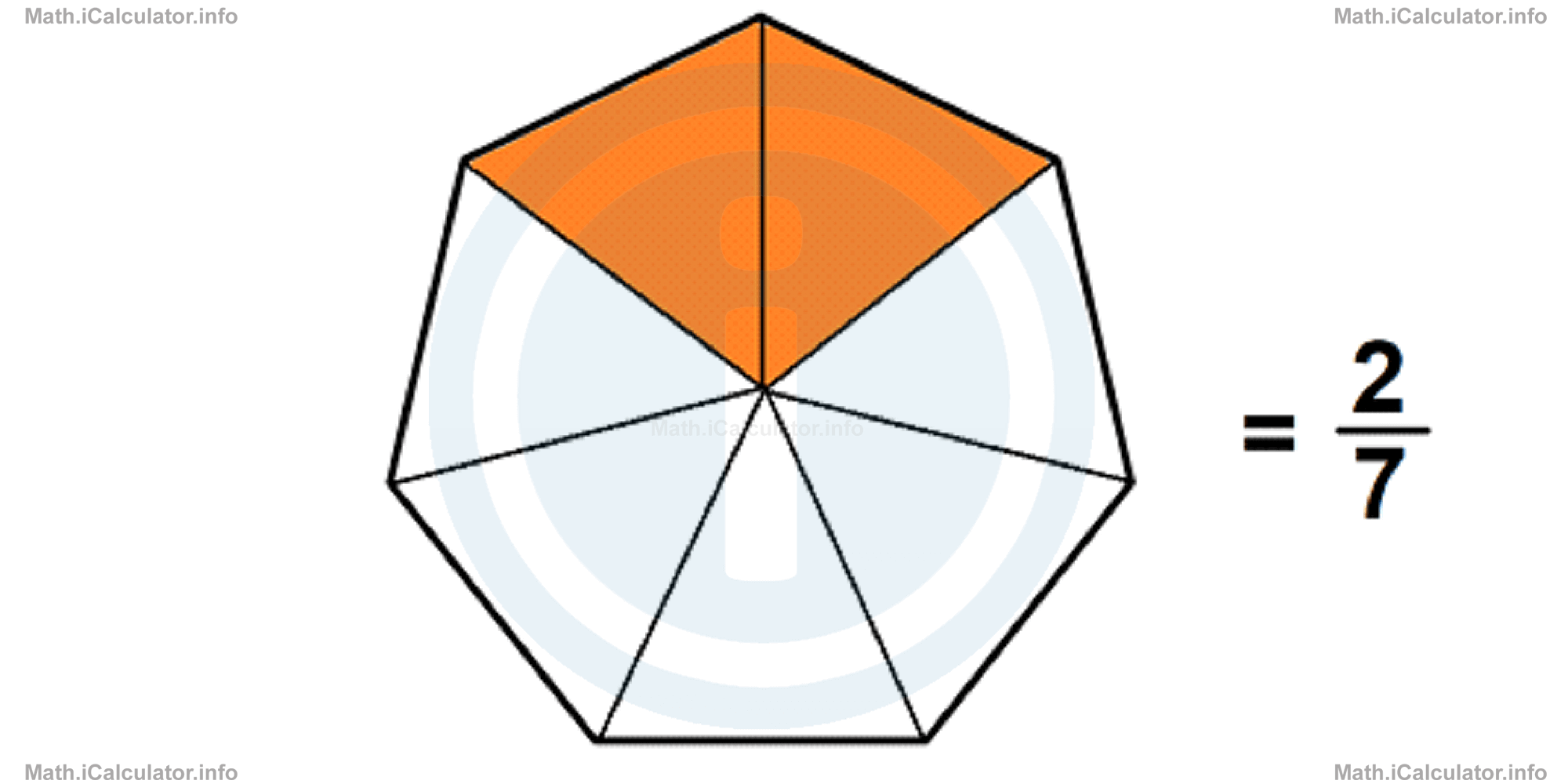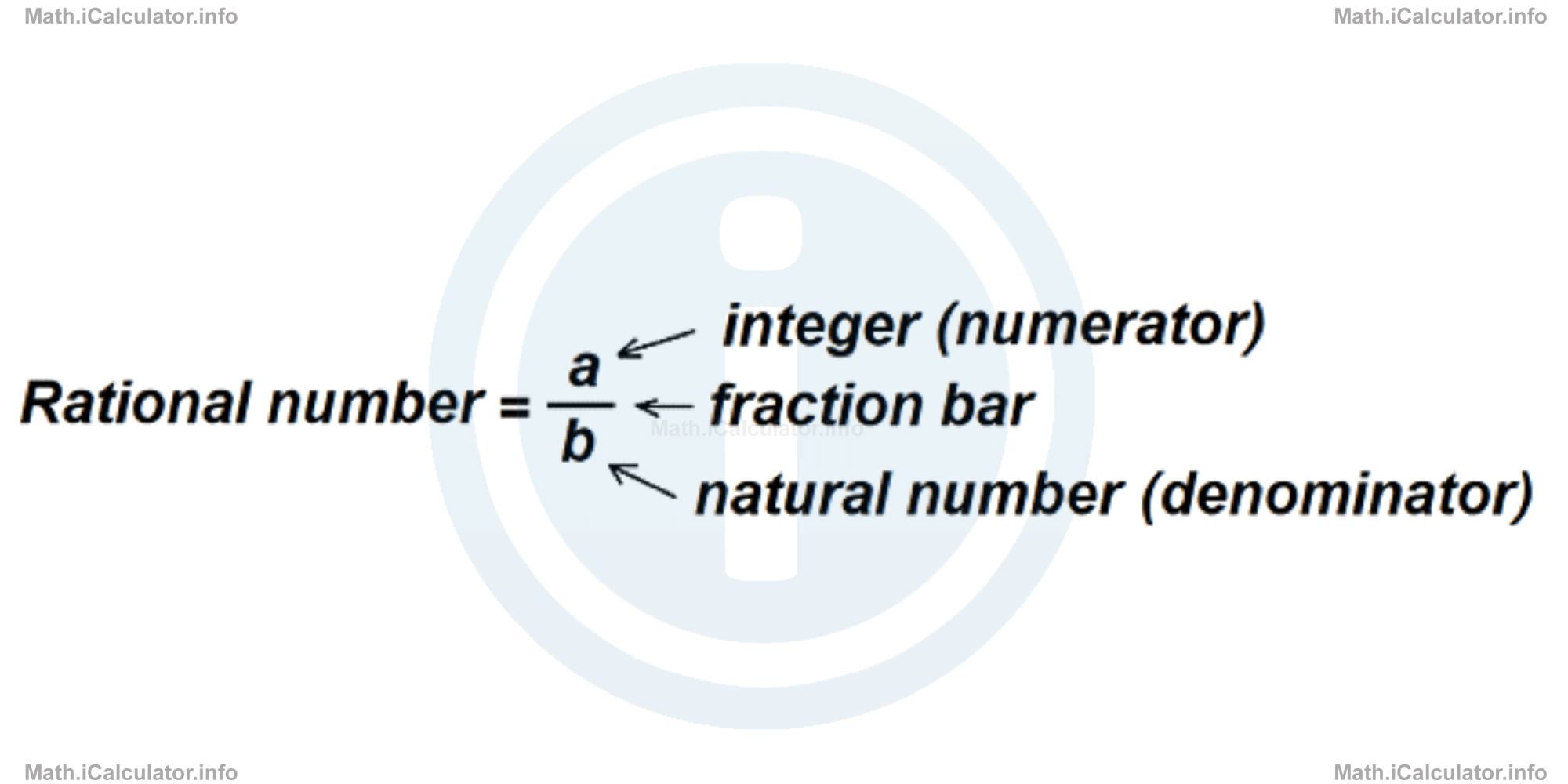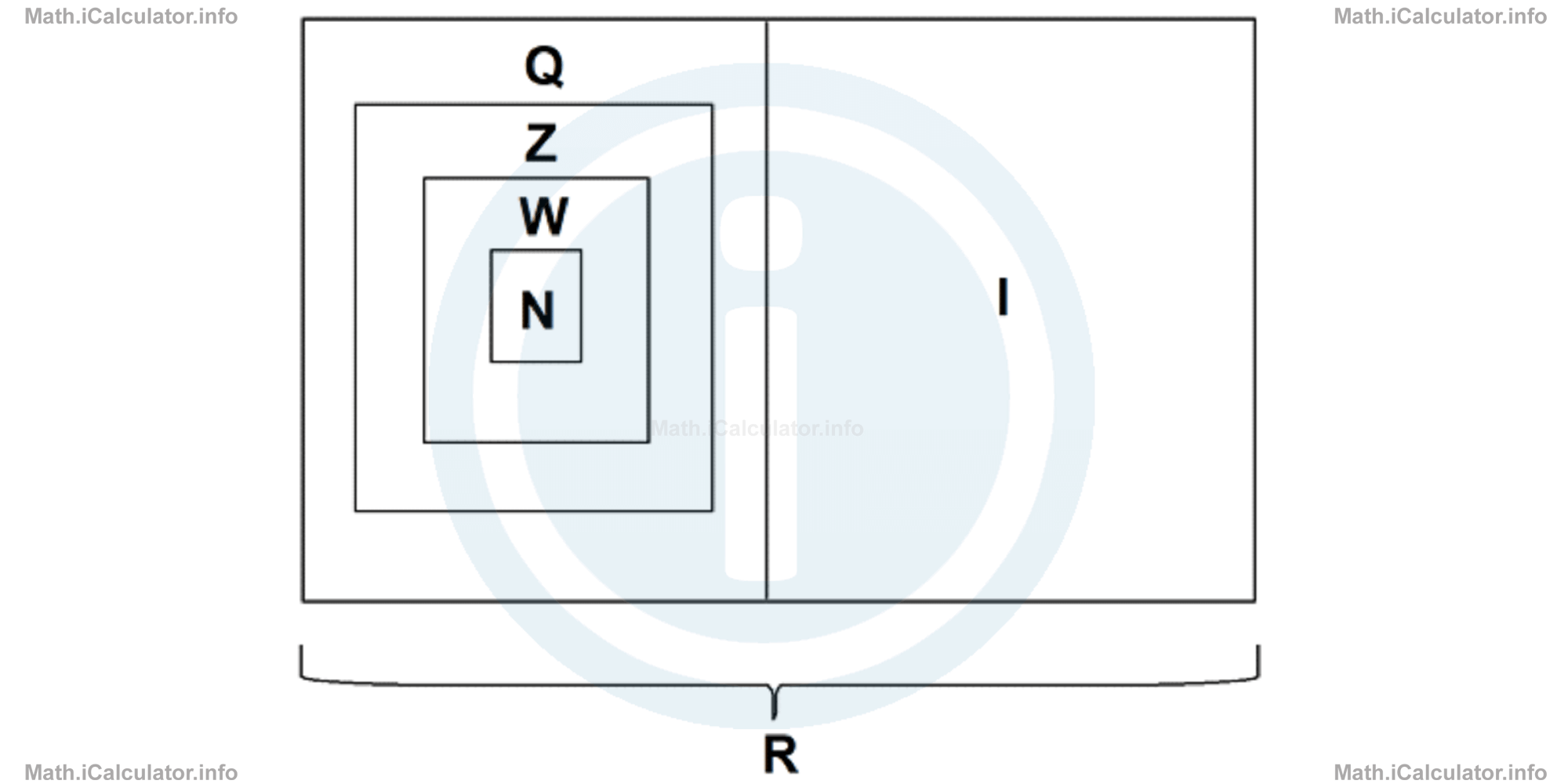Menu
Math Lesson 1.2.1 - Number Sets
Please provide a rating, it takes seconds and helps us to keep this resource free for all to use
Welcome to our Math lesson on Number Sets, this is the first lesson of our suite of math lessons covering the topic of Number Sets, Positive and Negative Numbers and Number Lines, you can find links to the other lessons within this tutorial and access additional Math learning resources below this lesson.
Number Sets
By definition, sets are groups or collections of items which have common properties. For example, the set of people working in a factory share a common property: All of them work in the same workplace.
The common feature all number sets share is that all of them contain not just numbers, but these numbers are somehow related between them through a formula or rule.
Numbers do not always have the same meaning as they are used in a variety of situations. Some numbers are used to count items, others to represent a part of a whole, and so on. Depending on the situation involved, we have the following sets of numbers:
a. Natural Numbers
As explained in the previous tutorial, numbers were invented to count items. For example, ancient people used numbers to count people, animals, objects around them, etc. All of these items were counted by using whole positive numbers (the meaning of negative numbers was not understood until much later). In addition, people originally couldn't understand the meaning of "zero", that is of "nothing". Hence, the oldest set of numbers included numbers like 1, 2, 3, 4, .... etc., which in math are known as "natural numbers", i.e. numbers used to count items in nature. We can write the set of natural numbers N in a list form like
The common feature in this case is that natural numbers represent whole and positive values. Natural numbers have a beginning (the number 1) but no end; they can extend to infinity.
Examples of natural numbers include the number of people present in a trade center, the number of sand grains on a beach, the number of stars in the sky and so on. Despite the last two numbers representing very large numbers of items, they still represent natural numbers as we can count the items one by one although doing so would take a lot of time.
b. Whole Numbers
When the number zero was defined by Arabs, it became necessary to extend the set of natural numbers to include zero. This new set is known as the set of Whole Numbers, W. This set too, has a beginning (the number zero) and no end. Hence, when this new set is expressed in list form, it becomes
Therefore, we can write Z = N + {0}.
c. Integers
When negative numbers began to come in use, it became necessary to extend the set of whole numbers to include the negative ones. This new set is known as Integers, Z. It has neither beginning (it is impossible to find the smallest negative number), nor end (it is impossible to find the largest positive number as well). Hence, we can write
d. Rational Numbers
We do not always work with whole amounts of items. For example, if a pizza is divided into 8 equal pieces and we eat 5 of them (5 out of 8), this amount is not a whole number but a part of it. We use fractions to represent partial amounts of items. Look at the figure below.

A fraction is the popular term used for Rational Numbers, Q (i.e. numbers written as ratios). Hence, any rational number is written as

Every fraction contains three parts: the bottom number (denominator) indicates the number of equal parts the whole item is divided into; the top number (numerator) indicates the number of parts of the whole involved in the given situation. The denominator must be a natural number as the item cannot be divided into zero or negative parts, while the numerator must be an integer in order to form a rational number. For example, the numbers
are all rational numbers as all their numerators contain integers while denominators are made of natural numbers. On the other hand,
are also rational numbers but not in the standard form. They become regular rational numbers when we complete operations to remove the decimal point in the numerators. In this way, applying the properties of an equivalent fraction (we will discuss this in detail in the upcoming tutorials but we will cover one here to illustrate this example): "an equivalent fraction is obtained when we multiply or divide a fraction by the same number", we obtain
-0.2/3 = -0.2 × 5/3 × 5 = -1/15
12.4/1237 = 12.4 × 5/1237 × 5 = 62/6185
0.00/71 = 0/71 = 0
The last number is rational because integers are also rational numbers. Hence, all numbers are now expressed in the regular form which is determined by the definition of rational numbers.
In tutorial 1.6 we will explain in the how to convert any recurring fraction into a decimal and vice-versa.
e. Irrational Numbers
Not all numbers can be expressed as fractions. For example, √2, √3, √5, etc., are all numbers that cannot be expressed as a fraction (we will see later in this tutorial why). Hence, they are not rational (we say they are Irrational Numbers, I). Thus, a number can either be rational or irrational but not both.
How do we know whether a number is irrational?
When we divide the numerator and denominator of a fraction, we must obtain either:
- a finite number - shown in decimal form when using a calculator or
- an infinite number - the decimal number shown by the calculator must contain a recurring part after the decimal point when infinite.
For example, the calculator indicates the following values for √2 and √3:
and
As you see, none of these numbers have a recurring part after the decimal point, so we cannot write them as fractions.
On the other hand, when numbers such as 3/11, 5/17 etc., expressed in decimal form by dividing their numerator and denominator, we obtain
and
In the first number, we have 27 that repeats after the decimal point (we say 27 is recurrent) while in the second number, the recurrent part is 2941176470588235. Hence, both numbers are rational.
f. Real Numbers
This set includes both rational and irrational numbers. The set of real numbers is denoted by R.
The following figure shows the relationship between the number sets explained above.

Example 1
Which number sets do the following numbers belong?
Solution 1
37 is a natural number. However, since the set of natural numbers is included in that of whole numbers, 37 is a whole number too. For the same reason, it is also an integer. In addition, we can write the number 37 as 37/1 i.e. as a fraction. Therefore, 37 is also a rational number and therefore, a real one.
15/11 is a fraction; it cannot be natural, nor a whole number or an integer. It can only be a rational and real number.
√7 is an irrational number, hence a real number as well.
-4 is an integer. Therefore, it is also a rational number as we can write it as -4/1. It is also a real number as rational numbers are part of the set of real numbers.
More Number Sets, Positive and Negative Numbers and Number Lines Lessons and Learning Resources
Whats next?
Enjoy the "Number Sets" math lesson? People who liked the "Number Sets, Positive and Negative Numbers and Number Lines lesson found the following resources useful:
- Sets Feedback. Helps other - Leave a rating for this sets (see below)
- Arithmetic Math tutorial: Number Sets, Positive and Negative Numbers and Number Lines. Read the Number Sets, Positive and Negative Numbers and Number Lines math tutorial and build your math knowledge of Arithmetic
- Arithmetic Video tutorial: Number Sets, Positive and Negative Numbers and Number Lines. Watch or listen to the Number Sets, Positive and Negative Numbers and Number Lines video tutorial, a useful way to help you revise when travelling to and from school/college
- Arithmetic Revision Notes: Number Sets, Positive and Negative Numbers and Number Lines. Print the notes so you can revise the key points covered in the math tutorial for Number Sets, Positive and Negative Numbers and Number Lines
- Arithmetic Practice Questions: Number Sets, Positive and Negative Numbers and Number Lines. Test and improve your knowledge of Number Sets, Positive and Negative Numbers and Number Lines with example questins and answers
- Check your calculations for Arithmetic questions with our excellent Arithmetic calculators which contain full equations and calculations clearly displayed line by line. See the Arithmetic Calculators by iCalculator™ below.
- Continuing learning arithmetic - read our next math tutorial: Operations with Numbers and Properties of Operations
Help others Learning Math just like you
Please provide a rating, it takes seconds and helps us to keep this resource free for all to use
We hope you found this Math tutorial "Number Sets, Positive and Negative Numbers and Number Lines" useful. If you did it would be great if you could spare the time to rate this math tutorial (simply click on the number of stars that match your assessment of this math learning aide) and/or share on social media, this helps us identify popular tutorials and calculators and expand our free learning resources to support our users around the world have free access to expand their knowledge of math and other disciplines.
Arithmetic Calculators by iCalculator™
- Arithmetic Expressions Calculator
- Decimal Hexadecimal Number Calculator
- Hexadecimal Decimal Number Calculator
- Hindu Arabic To Roman Numbers Converter
- Identifying Factors Number Calculator
- Least Common Multiple And Greatest Common Factor Calculator
- Prime Numbers Identifier
- Greatest Common Divisor Calculator
- Number Format Converter
- Math Powers
- Square Root Calculator
- Exponents Calculator
- Binary Calculator
- Binary To Decimal Calculator
- Common Factors
- Imperial Converter
- Imperial To Metric Converter
- Length Converter
- Metric Converter
- Metric Units Conversion Calculator
- Roman Numerals Converter
- Rounding Numbers Calculator
- Round To Nearest Multiple Calculator
- Sig Fig Calculator
- Unit Rate Calculator
- Weight Conversion Calculator